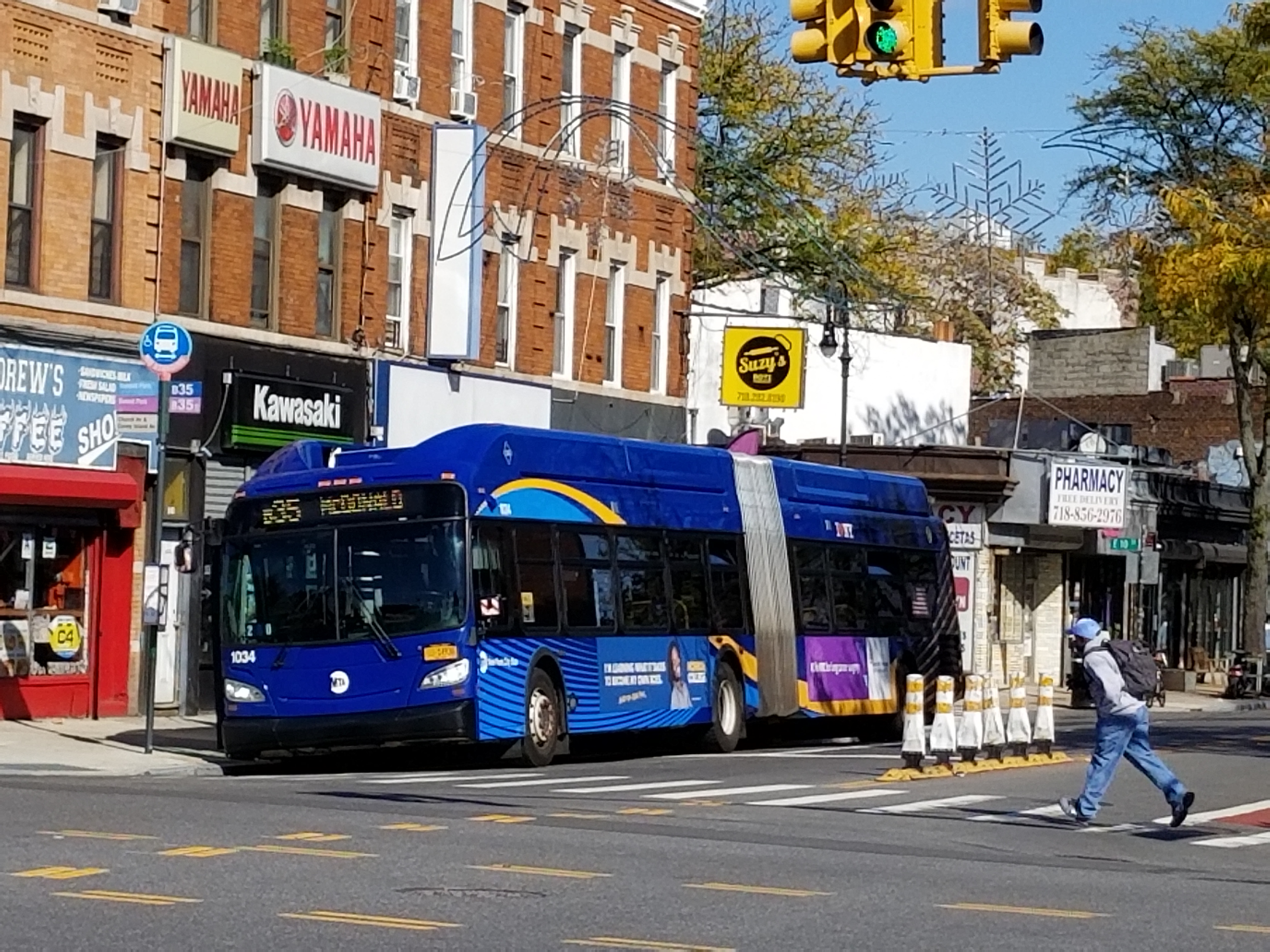Brooklyn Bus Network Redesign: Riders Want Faster Routes, More Buses, and Better Connections


BROOKLYN — Back in October, The Metropolitan Transportation Authority (MTA) began to study Brooklyn’s bus network in preparation for a redesign and hosted 10 community open houses across the borough to solicit input on which routes to fix and how.
Brooklyn will be the fourth borough that the MTA will redesign the bus network of, following Staten Island, the Bronx, and Queens. Staten Island’s redesign has been completed, while those in the Bronx and Queens are still in the planning phases. Many of Brooklyn’s routes are the descendants of old streetcar lines leftover from the 1950s.
Currently, the Brooklyn Bus Network, comprised of 72 routes, carries over 650,000 riders on an average weekday. In general, bus boardings are more prevalent in the eastern half of the borough, particularly in the neighborhoods east of Prospect Park. Most Brooklyn bus customers transfer as part of their journey; 37% transfer to another bus and 35% transfer to the subway.
On Thursday, the MTA released its Existing Conditions Report, the first step in the bus network redesign process, based on studies and community feedback.
“The goal is to take a fresh look at Brooklyn, its people, its travel needs, and what can be done to improve bus travel to meet those needs,” the report states.
Key findings of the report:
How will Brooklyn benefit from the redesign?
- Brooklyn’s ongoing population (Brooklyn’s population has grown 5.2% since 2010) and employment growth are expected to continue, though some neighborhoods are expected to grow faster than others. While the Brooklyn Bus Network covers nearly the entire borough, it has not changed much in the past decades to support this growth.
- Currently, just 31 of the 170 subway stations in Brooklyn are accessible according to standards established by the Americans with Disabilities Act (ADA). The network redesign will be particularly important for those customers whose transit options are currently more limited.
- According to Census data, about 55% of Brooklyn households do not own a vehicle. About 62% of Brooklyn commuters travel via transit. About 53% of Brooklyn commuters identified rail modes as their primary means of transportation, while 9% identified bus as their primary means. About 23% of commuters drive to work.
The existing conditions are not ideal.
- Much of the network is a grid, though in some neighborhoods, circuitous routes slow down travel to key destinations and transfer points.
- Bus routes sometimes operate on nearby parallel streets, splitting the available resources.
- Bus priority is generally limited to Select Bus Service (SBS) corridors and does not benefit most Brooklyn bus riders.
- Bus stops spaced close together slow down bus travel, as the bus needs to frequently decelerate to a stop and then wait to re-enter the flow of traffic.
- Narrow streets and difficult turns, particularly left turns, hamper bus speeds and reliability.
- Even with bus routes covering much of the borough, there are opportunities to improve connectivity and provide easier access to places in Brooklyn and beyond where customers want to go.
The riders have opinions
- Customers want more frequent bus service to shorten waits at bus stops and faster travel on buses to get to their destinations more quickly. Average bus speeds in Brooklyn are the second-lowest of the five boroughs, at 7.0 mph in May 2019, and have slowed down 5% since 2014.
- Bus riders also want buses to be more reliable and less bunched. Once on the bus, Brooklyn customers spend more time traveling to their destination than the schedule would indicate, about one minute on average for each trip. About one-third of the time, it takes customers five minutes longer than expected to complete their trip.
- Commuters also made it clear they want access to more of the city with the redesign, both within and between Brooklyn neighborhoods and other boroughs. But to also make the network more simple and be easier to use.
Do you have opinions?
Submit a comment to share your thoughts, questions or concerns about your experience with the Brooklyn Bus Network, and any ideas or suggestions you may have.
What’s Next?
Following this report, the MTA will develop a Draft Plan of a new bus network that reflects the findings in this report and the received input alongside NYC’s Department of Transportation. Additional public input sessions will be held following the release of the Draft Plan in the spring, and the Proposed Final Plan should be released in the fall of 2020.





